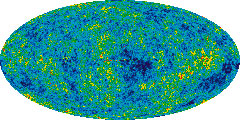Franktalk wrote:DrW wrote:Don't know why Franktalk* puts so much of his faith in erosion rates. Erosion and sedimentation rates are highly variable.
Both sedimentation and erosion are dependent to a large extent on differences in elevation, which occur because of plate compression and the consequent uplift and folding of the Earth's crust. As you and Huckleberry point out, this is a very slow process.
_________________________
*Edited to change subgenius to Franktalk (the guy who really loves erosion) -- sorry subgenius.
I do love erosion. It has carved some of the most beautiful landscapes. Now if you could point me to where atomic decay was verified by alternative means we could move along. Can't you find just one detailed verification of atomic decay? (not radiocarbon) You see I want to place my faith in something I have really checked out. So show me some studies that will give me the faith that you have in atomic decay. If you can't find one study then we need to have a discussion as to what that means.
Franktalk,
There are a number of independent verifications of radiometric dating (regardless of what your creationist websites might say). The reason folks use radiometric dating is because it is the most convenient, reproducible, and widely applicable method available for geological samples. It is considered the Gold Standard in Earth sciences and other independent dating methods often compare their estimates to those of radiometric (isotope ratio) dating.
There are methods that are completely independent of radiometric dating that either confirm the age of the Earth / Solar System at around 4.5 billion years, or can be used to put lower limit (older than) estimates on the age of the Earth. These include:
Helioseismology is the measurement of the differences in the propagation of sound waves in the sun as its composition changes as it burns its nuclear fuel. This radiometric-independent measurement gives an age for the sun of approximately 4.57 +/- 0.11 billion years.
A. Bonanno, H. Schlattl, L. Paternò (2002). "The age of the Sun and the relativistic corrections in the EOS". Astronomy and Astrophysics 390: 1115. doi:10.1051/0004-6361:20020749.Nitrogen content of natural diamonds puts an "older than" limit on the age of the Earth's upper mantle at 200 million to 2 billion years. As you know, diamonds are made of very densely packed carbon atoms and it takes a long time for nitrogen to migrate into the diamond matrix. This work was done in the early 1980s but holds up well.
T. Evans, Zengdu Qi (1981). "The kinetics of the aggregation of of nitrogen atoms in diamond". Proceedings of the Royal Society, London. A 381, 159-178.In terms of a detailed comparison of radiometric dating from the long lived radionuclides, those used to get estimates on the age of the Universe, for example, one needs to consider other measures from astrophysics and astronomy.
The Uranium 238 / Thorium 232 ratio measurement yields an age for the Universe of 14.5 + 2.8 /-2.2 billion years. (Did not look for a reference here - this is a well known number). If you insist, I can find one.
The most well defined and accurate measurement we have of the age of the universe comes from the
Wilkinson Microwave Anisotropy Probe (WMAP) project. The WMAP probe mission was launched in 2001 and was successful in measuring variations in the microwave background from the Big Bang, from which the age of the Universe could be accurately determined at 13.7 billion years.
This measurement has already been alluded to on this thread or the TBM=YEC thread as the microwave background measurement. It is well known.
Papers from this project are the most cited papers in physics and astronomy so far this millennium. A good paper reference for this work is:
http://www.sciencewatch.com/ana/hot/phy/08marapr-phy/ An image of the WMAP microwave sky is shown below. Colors represent temperature fluctuations.(The average temperature is slightly more than 2 degrees K - 2 degrees above absolute zero).

If you want to know more about WMAP, there is also plenty of information on the internet. The WMAP team was awarded the 2012 Gruber Prize in Cosmology for this more than decade long data collection and analysis project.
You will notice that this new 13.7 billion year (new) Gold Standard number from WMAP for the age of the universe lies within the uncertainty (4.5 - 2.2) of the Uranium/ Thorium ration measurements.
You can't ask for any more than that.
